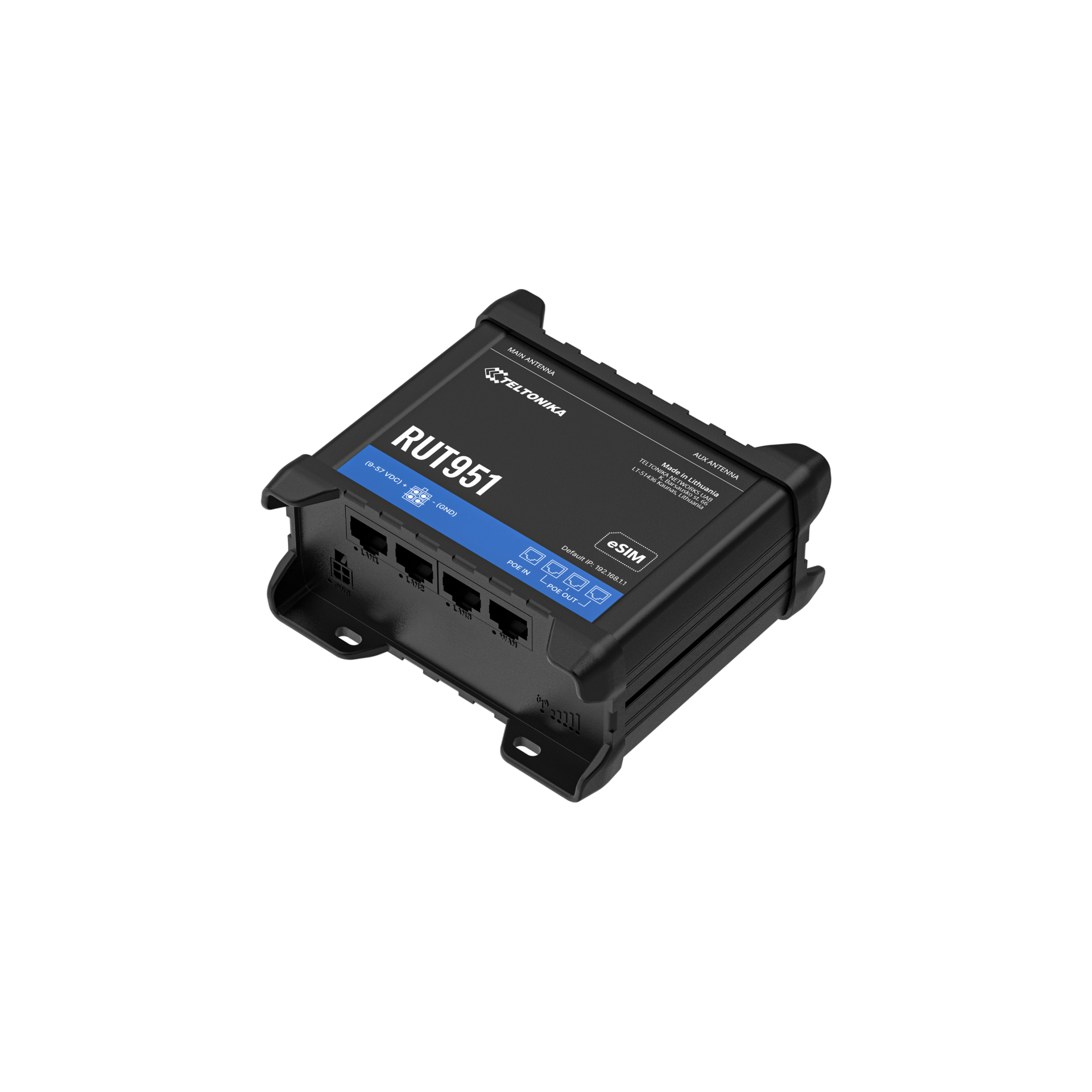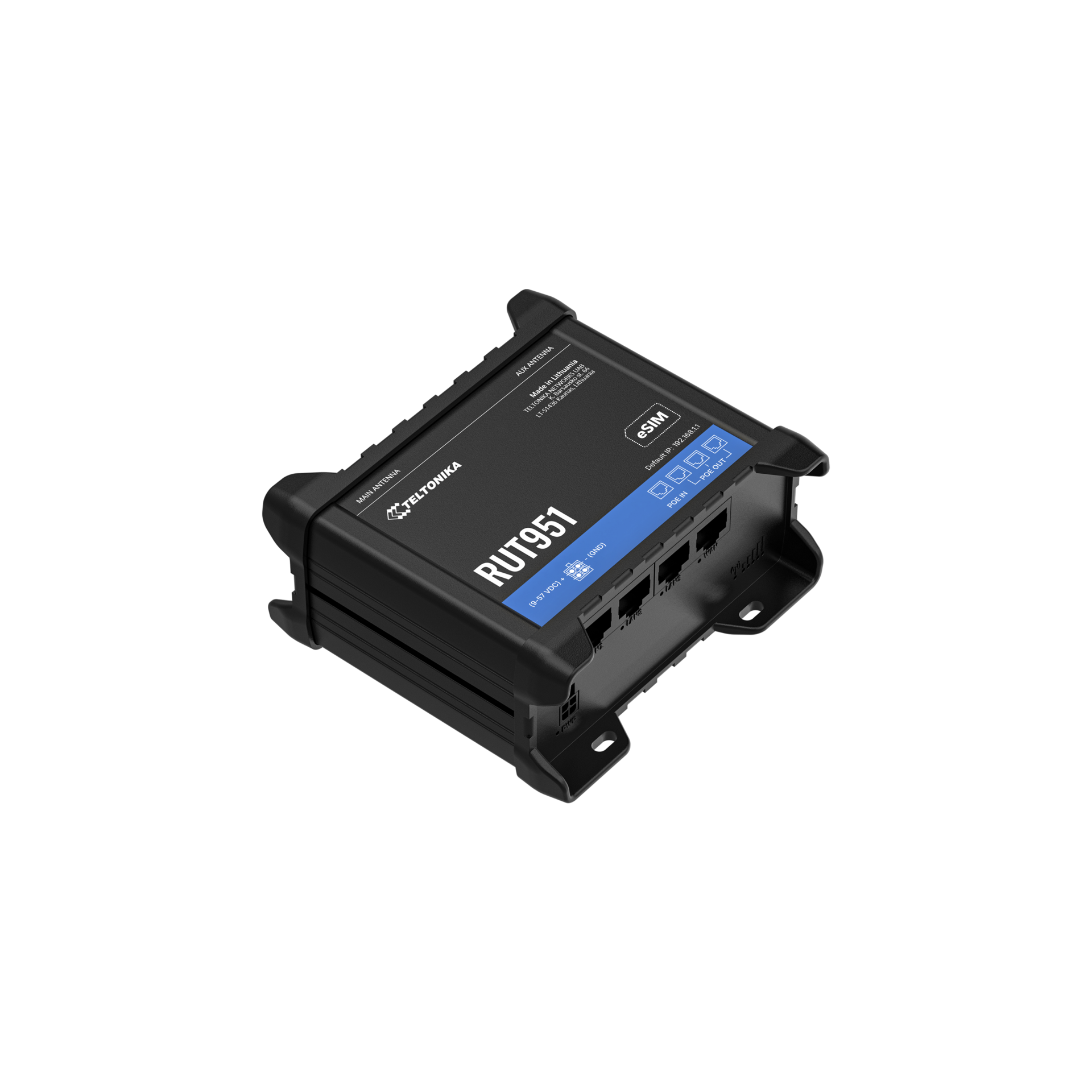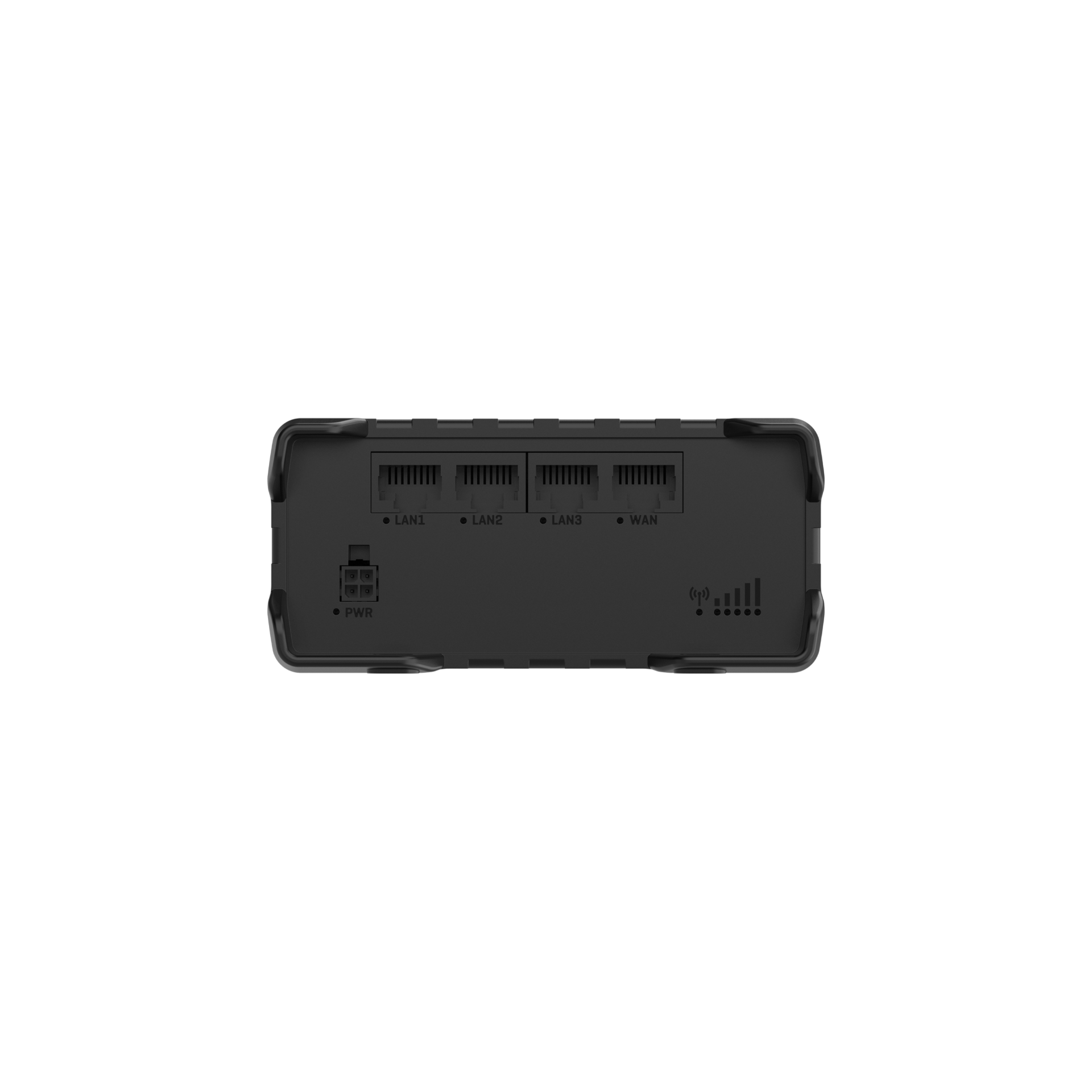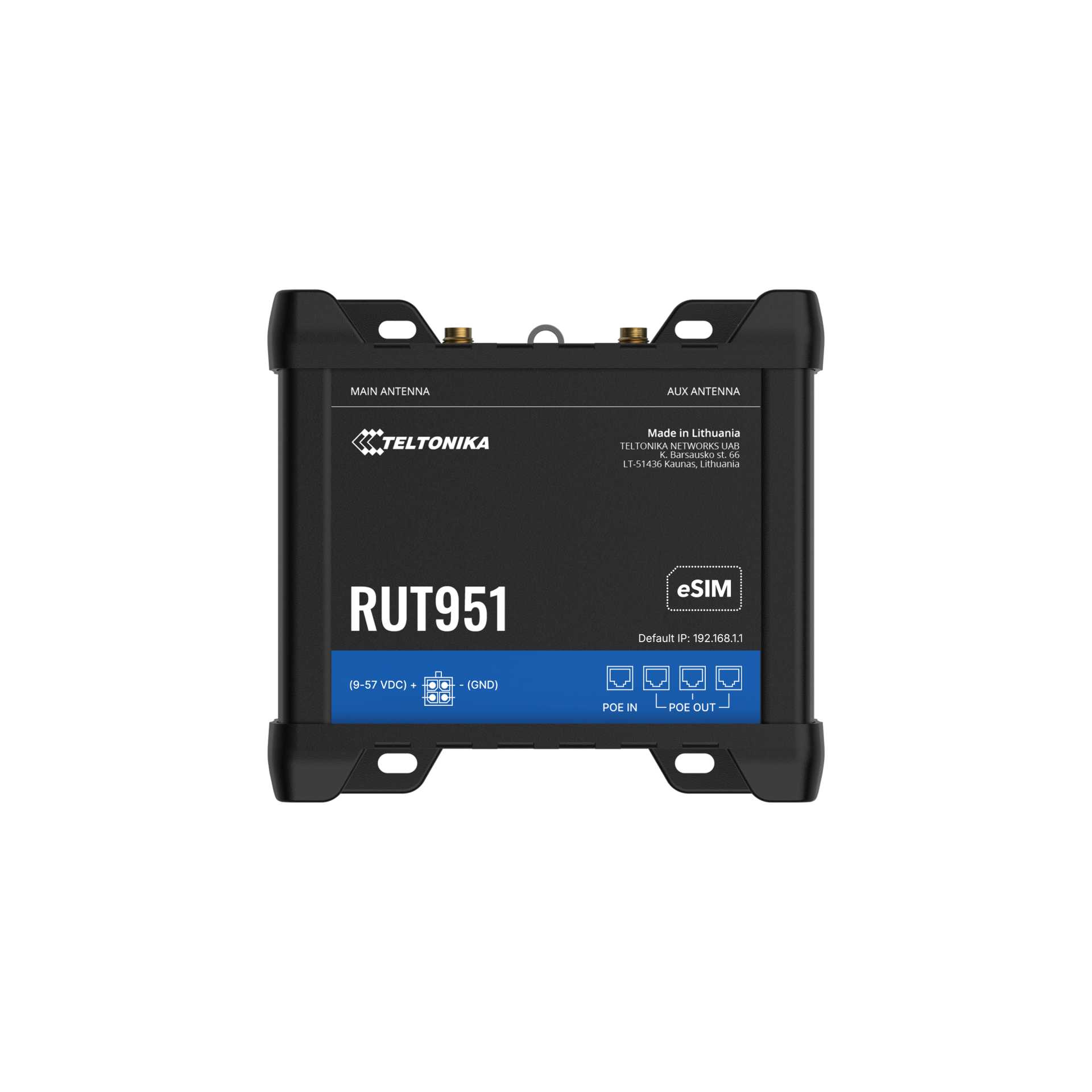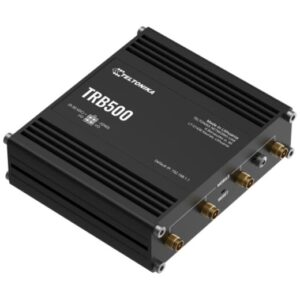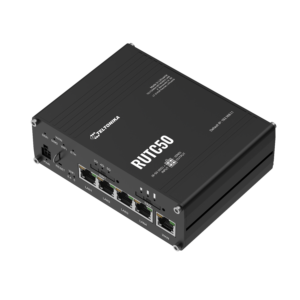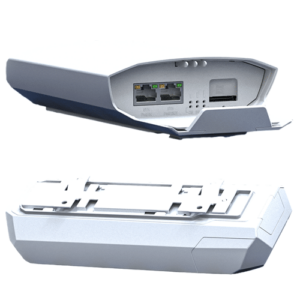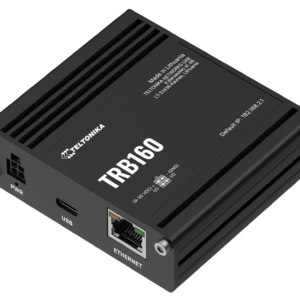4G LTE Cat 4 up to 150 DL/50 UL Mbps; 3G up to 21 DL/5.76 UL Mbps; 2G up to 236.8 DL/236.8 UL kbps
Release 10/11 depending on the hardware version
2 SIM cards, auto-switch cases: weak signal, data limit, SMS limit, roaming, no network, network denied, data connection fail, SIM idle protection
Consumer type eSIM, profile download and removal operations, up to 7 eSIM profiles; does not include data plans
IMSI, ICCID, operator, operator state, data connection state, network type, bandwidth, connected band, signal strength (RSSI), SINR, RSRP, RSRQ, EC/IO, RSCP, data sent/received, LAC, TAC, cell ID, ARFCN, UARFCN, EARFCN, MCC, and MNC
SMS status, SMS configuration, EMAIL to SMS, SMS to EMAIL, SMS to HTTP, SMS to SMS, scheduled SMS, SMS autoreply, SMPP
Supports sending and reading Unstructured Supplementary Service Data messages
Operator block/allow list (by country or separate operators)
Possibility to use different PDNs for multiple network access and services
Band lock, Used band status display
SIM PIN code management enables setting, changing, or disabling the SIM card’s PIN
Auto APN
Direct connection (bridge) between mobile ISP and device on LAN
Router assigns its mobile WAN IP address to another device on LAN
802.11b/g/n (Wi-Fi 4), Access Point (AP), Station (STA)
WPA2-Enterprise: PEAP, WPA2-PSK, WPA-EAP, WPA-PSK, WPA3-SAE, WPA3-EAP, OWE; AES-CCMP, TKIP, Auto-cipher modes, client separation, EAP-TLS with PKCS#12 certificates, disable auto-reconnect, 802.11w Protected Management Frames (PMF)
SSID stealth mode and access control based on MAC address
Up to 100 simultaneous connections
Wireless mesh (802.11s), fast roaming (802.11r), Relayd, BSS transition management (802.11v), radio resource measurement (802.11k)
Allowlist, blocklist
Once scanned, a user will automatically enter your network without needing to input login information
Forward Wi-Fi hotspot landing page to a subsequent connected device
1 x WAN port 10/100 Mbps, compliance IEEE 802.3, IEEE 802.3u, 802.3az standards, supports auto MDI/MDIX
3 x LAN ports, 10/100 Mbps, compliance IEEE 802.3, IEEE 802.3u standards, supports auto MDI/MDIX
Static routing, Dynamic routing (BGP, OSPF v2, RIP v1/v2, EIGRP, NHRP), Policy based routing
TCP, UDP, IPv4, IPv6, ICMP, NTP, DNS, HTTP, HTTPS, SFTP, FTP, SMTP, SSL/TLS, ARP, VRRP, PPP, PPPoE, UPNP, SSH, DHCP, Telnet, SMPP, SNMP, MQTT, Wake On Lan (WOL), VXLAN
H.323 and SIP-alg protocol NAT helpers, allowing proper routing of VoIP packets
Ping Reboot, Wget Reboot, Periodic Reboot, LCP and ICMP for link inspection
Port forward, traffic rules, custom rules, TTL target customisation
View all your Firewall statistics, rules, and rule counters
View device ports, enable and disable each of them, turn auto-configuration on or off, change their transmission speed, and so on
Visual representation of your network, showing which devices are connected to which other devices
Captive portal (hotspot), internal/external Radius server, Radius MAC authentication, SMS authorisation, SSO authentication, internal/external landing page, walled garden, user scripts, URL parameters, user groups, individual user or group limitations, user management, 9 default customisable themes and optionality to upload and download customised hotspot themes
Static and dynamic IP allocation, DHCP relay, DHCP server configuration, status, static leases: MAC with wildcards
Traffic priority queuing by source/destination, service, protocol or port, WMM, 802.11e
Supported >77 service providers, others can be configured manually
DNS over HTTPS proxy enables secure DNS resolution by routing DNS queries over HTTPS
Wi-Fi WAN, Mobile, VRRP, Wired options, each of which can be used as an automatic Failover
Balance Internet traffic over multiple WAN connections
Possibility to mount remote file system via SSH protocol
Real-time monitoring, wireless signal charts, traffic usage history
Mirroring network traffic on Ethernet ports for monitoring and analysis
Pre-shared key, digital certificates, X.509 certificates, TACACS+, Internal & External RADIUS users authentication, IP & login attempts block, time-based login blocking, built-in random password generator
Preconfigured firewall rules can be enabled via WebUI, unlimited firewall configuration via CLI, DMZ, NAT, NAT-T, NAT64
DDOS prevention (SYN flood protection, SSH attack prevention, HTTP/HTTPS attack prevention), port scan prevention (SYN-FIN, SYN-RST, X-mas, NULL flags, FIN scan attacks)
Port and tag-based VLAN separation
Mobile data limit, customizable period, start time, warning limit, phone number
Blacklist for blocking out unwanted websites, Whitelist for specifying allowed sites only
Flexible access control of SSH, Web interface, CLI and Telnet
Let’s Encrypt and SCEP certificate generation methods
Multiple clients and a server can run simultaneously, 27 encryption methods
DES-CBC 64, RC2-CBC 128, DES-EDE-CBC 128, DES-EDE3-CBC 192, DESX-CBC 192,
BF-CBC 128, RC2-40-CBC 40, CAST5-CBC 128, RC2-64-CBC 64, AES-128-CBC 128, AES-128-CFB 128, AES-128-CFB1 128, AES-128-CFB8 128, AES-128-OFB 128, AES-128-GCM 128, AES-192-CFB 192, AES-192-CFB1 192, AES-192-CFB8 192, AES-192-OFB 192, AES-192-CBC 192, AES-192-GCM 192, AES-256-GCM 256, AES-256-CFB 256, AES-256-CFB1 256, AES-256-CFB8 256, AES-256-OFB 256, AES-256-CBC 256
XFRM, IKEv1, IKEv2, with 14 encryption methods for IPsec (3DES, DES, AES128, AES192, AES256, AES128GCM8, AES192GCM8, AES256GCM8, AES128GCM12, AES192GCM12, AES256GCM12, AES128GCM16, AES192GCM16, AES256GCM16)
GRE tunnel, GRE tunnel over IPsec support
Client/Server instances can run simultaneously, L2TPv3, L2TP over IPsec support
Proxy designed to add TLS encryption functionality to existing clients and servers without any changes in the program’s code
Method of building scalable IPsec VPNs, Phase 2 and Phase 3 and Dual Hub support
SSTP client instance support
ZeroTier VPN client support
WireGuard VPN client and server support
Tinc offers encryption, authentication and compression in it’s tunnels. Client and server support.
Client, Server
TCP
Server, Client
TCP
MODBUS TCP custom register block requests, which read/write to a file inside the router, and can be used to extend MODBUS TCP Client functionality
8-bit: INT, UINT; 16-bit: INT, UINT (MSB or LSB first); 32-bit: float, INT, UINT (ABCD (big-endian), DCBA (little-endian), CDAB, BADC), HEX, ASCII
HTTP(S), MQTT, Azure MQTT
Extract parameters from multiple sources and different protocols, and send them all to a single server; Custom LUA scripting, allowing scripts to utilize the router’s Data to server feature
Allows sending commands and receiving data from MODBUS Server through MQTT broker
Station, Outstation
TCP
DLMS – standard protocol for utility meter data exchange
Client
TCP
Expand your device’s possibilities by using a set of configurable API endpoints to retrieve or change data. For more information, please refer to this documentation: https://developers.teltonika-networks.com
HTTP/HTTPS, status, configuration, FW update, CLI, troubleshoot, multiple event log servers, firmware update availability notifications, event log, system log, kernel log, Internet status
Firmware update from server, automatic notification
SSH (v1, v2)
SMS status, SMS configuration
Reboot, Status, Mobile data on/off, Output on/off, answer/hang-up with a timer, Wi-Fi on/off
OpenACS, EasyCwmp, ACSLite, tGem, LibreACS, GenieACS, FreeACS, LibCWMP, Friendly tech, AVSystem
MQTT Broker, MQTT publisher
SNMP (v1, v2, v3), SNMP Trap, Brute force protection
Management API over HTTP/HTTPS
Teltonika Remote Management System (RMS)
Allows monitoring of: WAN Type, WAN IP, Mobile Operator Name, Mobile Signal Strength, Mobile Network Type
Allows monitoring of: Device Model, Revision and Serial Number, WAN Type and IP, Mobile Cell ID, ICCID, IMEI, Connection Type, Operator, Signal Strength. Has reboot and firmware upgrade actions
Can be configured with Data to Server to send all the available parameters to the cloud. Has Direct method support which allows to execute RutOS API calls on the IoT Hub. Also has Plug and Play integration with Device Provisioning Service that allows zero-touch device provisioning to IoT Hubs
Utility to interact with the AWS cloud platform. Jobs Support: Call the device’s API using AWS Jobs functionality
Mediatek, 580 MHz, MIPS 24KEc
128 MB, DDR2
16 MB, SPI Flash
Update FW from file, check FW on server, configuration profiles, configuration backup
Update FW
Update FW/configuration for multiple devices at once
Update FW without losing current configuration
A full factory reset restores all system settings, including the IP address, PIN, and user data to the default manufacturer’s configuration
RutOS (OpenWrt based Linux OS)
Busybox shell, Lua, C, C++
SDK package with build environment provided
You can create your own custom, branded firmware and web page application by changing colours, logos, and other elements in our firmware to fit your or your clients’ needs
The Package Manager is a service used to install additional software on the device
Port 1 (LAN1)
IEEE 802.3af (PoE, Type 1) and IEEE 802.3at (PoE+, Type 2) compliant PD port (LAN1)
Port 2 – 4 (LAN2, LAN3, WAN)
IEEE 802.3af (PoE, Type 1) and IEEE 802.3at (PoE+, Type 2) compliant PSE ports (LAN2, LAN3, WAN)
30 W Max
90 W
4-pin industrial DC power socket
9 – 57 VDC, reverse polarity protection, surge protection >58 VDC 10us max
48 – 57 VDC
Idle: < 5 W, Max: < 6.5 W, PoE Max: 100 W
4 x RJ45 ports, 10/100 Mbps
1 x Digital Input, 1 x Digital Output on 4-pin power connector
1 x Bi-color connection status, 5 x Mobile connection strength, 4 x ETH status, 1 x Power
2 x SIM slots (Mini SIM – 2FF), 1.8 V/3 V, external SIM holders, eSIM (Optional – different hardware required; contact your sales manager)
2 x SMA for LTE, 2 x RP-SMA for Wi-Fi antenna connectors
Reboot/User default reset/Factory reset button
Aluminium housing, plastic panels
110 x 50 x 100 mm
287 g
DIN rail, wall mount, flat surface (all require additional kit)
-40 °C to 75 °C
10% to 90% non-condensing
IP30
CE, UCRF, EAC, UKCA, RCM, WEEE
EN 55032:2015 + A11:2020
EN 55035:2017 + A11:2020
EN IEC 61000-3-2:2019 + A1:2021
EN 61000-3-3:2013 + A1:2019
EN 301 489-1 V2.2.3
EN 301 489-17 V3.2.4
EN 301 489-52 V1.2.1
EN 61000-4-2:2009
EN 61000-4-3:2020
EN 61000-4-4:2012
EN 61000-4-5:2014 + A1:2017
EN 61000-4-6:2014
EN 61000-4-11:2020
EN 300 328 V2.2.2
EN 301 511 V12.5.1
EN 301 908-1 V15.2.1
EN 301 908-2 V13.1.1
EN 301 908-13 V13.2.1
CE: EN IEC 62368-1:2020 + A11:2020, EN IEC 62311:2020, EN 50665:2017
RCM: AS/NZS 62368.1:2022
CB: IEC 62368-1:2018
